Insights from Participatory Vulnerability and Capacity Assessment in Kakdwip Block, Indian Sundarbans
BY SHABERI DAS AND SUGATA HAZRA • march 20, 2023
The last few weeks have been a whirlwind for Team Sound of Silence! Understanding and assessing the vulnerability of tribal communities in the project area, to climate change and disasters, and their potential capacity to cope and adapt, in contexts where these hazards are significant drivers of poverty and suffering has been our major intention this month. We conducted participatory vulnerability and capacity assessment (PVCA) exercises with the local communities in the 8 study villages, combining their knowledge with scientific data to gain an understanding about local risks, to directly inform community-led action interventions to reduce their vulnerability to disasters and climate change impacts.
In each hamlet, the villagers assembled in a community center or field, drawing colourful maps on the ground to explain the collective social infrastructure and resource bases available with them, the nature and recurrence of hazards faced, and coping mechanisms used, by the communities in the last four decades, seasonality of crops sown and harvested, availability of food and incidence of diseases, calendar of Adivasi cultural and religious events, and identification of relevant stakeholders for project activities. While Sound of Silence (SOS) has set out to work only with tribal communities, the PVCA exercises were open to all ethnic groups in each village, to better understand collective access to social infrastructure and resources, and collective experiences of, and vulnerability to, climate change and disasters.



Figure 1: Local communities participating in PVCA activities in Kakdwip, Kultali and Sandeshkhali I blocks, Indian Sundarbans
Following a three-day training stint in Kasiabad village, Kakdwip Block, to familiarize the team with PVCA activities and train them in its conduct, the field offices in each block proceeded to organize PVCA in the project villages under their charge. The proceedings were meticulously documented on maps drawn up on paper to replicate the ones drawn by the communities on the ground and reports prepared by the field teams. What emerged is a picture of the communities’ resources, the impacts of hazards on these resources and the vulnerabilities resulting from these impacts, which was instrumental in providing us crucial insights for the design of a household-level needs assessment survey and to conceptualize a community-led plan to enhance their adaptive capacity. Adivasi women’s self-help groups (WSHGs) and Adivasi youths’ groups to lead project activities have been formed and 100 households potentially under high biophysical and social vulnerability and climate risk are being selected from each of the 8 villages comprising the project area, namely Uttar Kasiabad and Kasiabad (Kakdwip block), Shyamnagar and Kantamari (Kultali block), Lebukhali and Kothabari (Hingalganj), and Kukrekhali and Dargapara (Sandeshkhali I block).
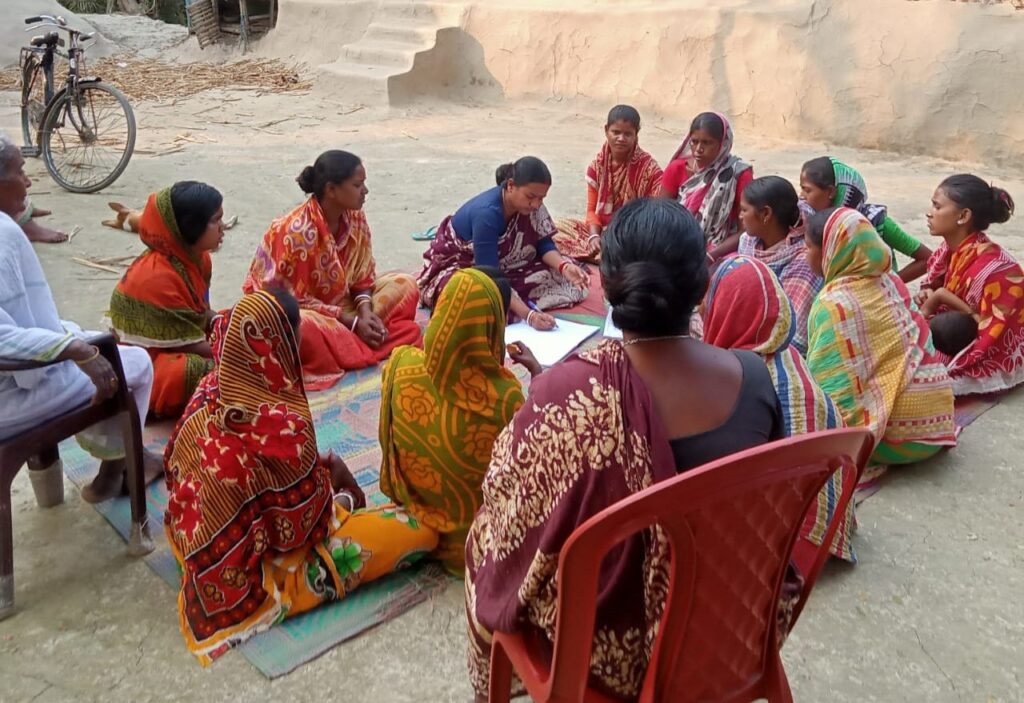
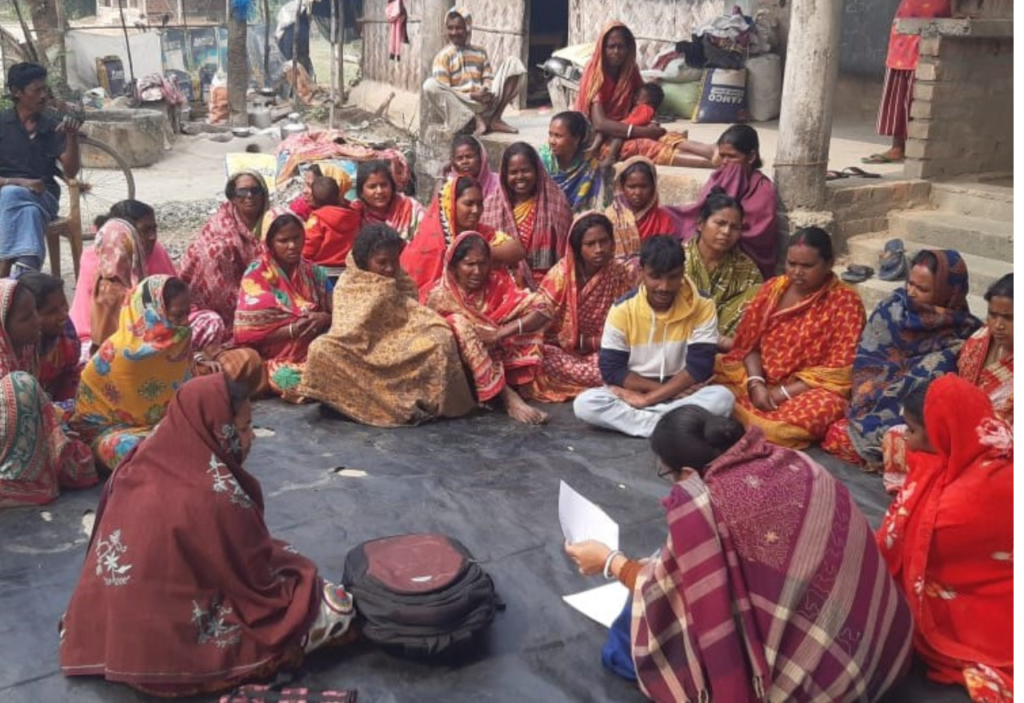
Figure 2: Formation of women’s self-help groups in Kultali
Here are some of our key insights from the PVCA exercises.
Resource Mapping in Kakdwip
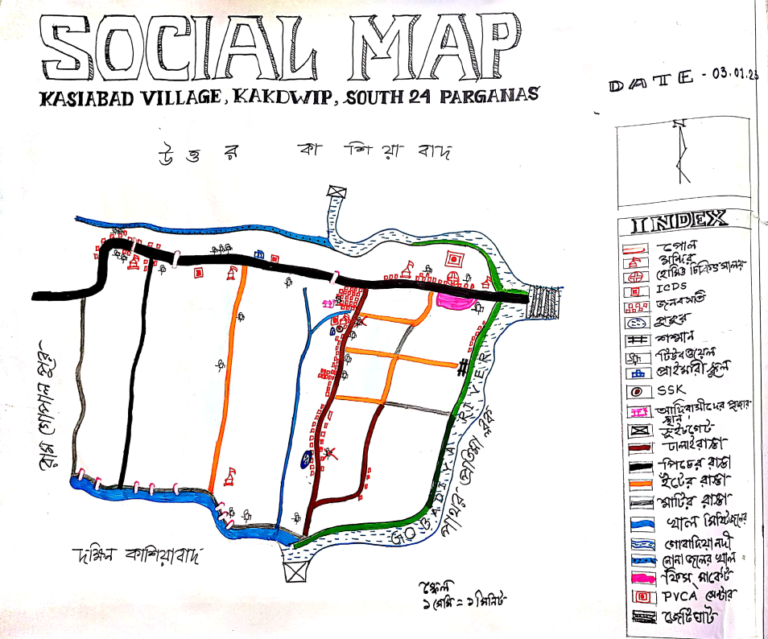
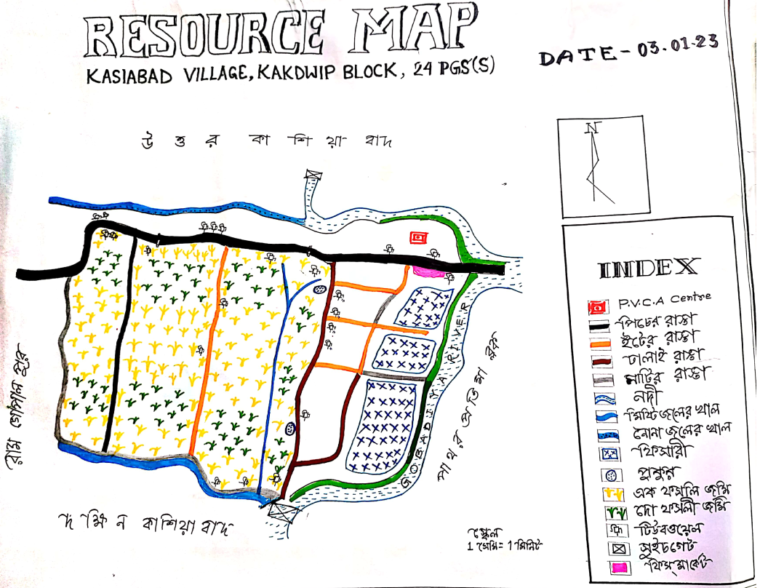
Figure 3: Social and resource maps of Kasiabad village, Kakdwip
Broadly, the following types of resources could be identified in each of the villages.
Natural resources, including fertile land, forest and river
- Social resources and infrastructure, including individual and community resources such as agricultural and aquaculture farms, ponds, canals, ditches, hand pumps, houses, schools, healthcare centers, cyclone shelters, temples etc.
- Financial resources, including financial assets and savings, bank accounts, insurance, loans etc.
- Cultural resources, including indigenous and local knowledge systems, art, music, performances, and religious, cultural and food practices
These resources (or lack thereof) interact with hazards, compounding the communities’ existing vulnerabilities and generating potential climate risk.
Identification of hazards
Social mapping revealed that the tribal hamlets in Kasiabad and Uttar Kasiabad are adjacent to the Gobadia River, protected mainly by mud embankments that are often breached by storms. Most of the houses are temporary (low mud floor, mud walls and tiled/asbestos roofs) while some are partially-permanent (brick and concrete walls and tiled/asbestos roofs).
Storms (norwesters), cyclones, surge inundation and erratic rainfall, all of which are gaining in frequency and severity (see Figure 4), as well as water scarcity in summer, are the most acute hazards which devastate social resources and infrastructure and aggravate the biophysical and social vulnerabilities of the Adivasis. However, they ranked the Covid pandemic a smaller disaster than cyclone and surges.

Figure 4: History of hazards (1982 – 2022) experienced in Kakdwip,their impacts ranked by the Community
Lack of freshwater forces the communities to depend on deep (>1000 feet) groundwater from hand pumps, which dry up in summer, and ponds, which are contaminated after flooding, for their domestic water consumption and for limited irrigation to support agriculture. River water is saline, and hence, unfit for consumption.
Additionally, their small landholding, though insufficient to sustain them year-long with a single rain-fed harvest, also makes them vulnerable to irregularities in the weather and climate and soil salinization after surge flooding. The history of hazards experienced in the region in the last four decades indicates that most natural disasters like cyclones and floods occur in the pre-monsoon months of April and May, when oilseeds are harvested and some vegetables harvested and transplanted, as well as in the months of October and November, when Aman (monsoon) paddy is harvested (see cropping timelines indicated in Figure 5) or when the rabi crop, including potato and Boro (winter) paddy grow. Dry spells are observed in June, due to delayed onset of monsoon, when most vegetables, legumes and tuberous crops are transplanted and require light irrigation.
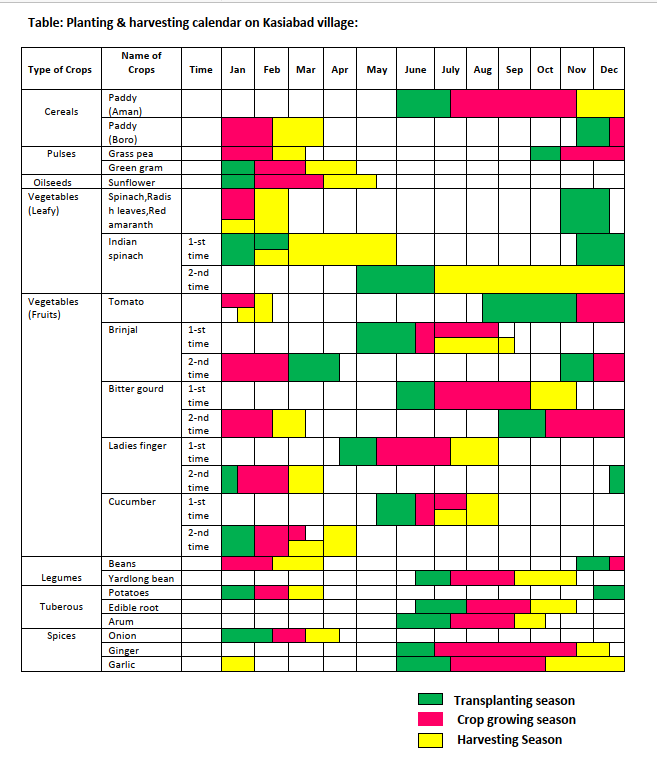
Figure 3: Crop Calendar of Kakdwip
Hazard impact, and an inability to adequately adapt, also exacerbates seasonal scarcities experienced by the communities, as indicated in the seasonal scarcity, hazard and disease incidence chart shown below.
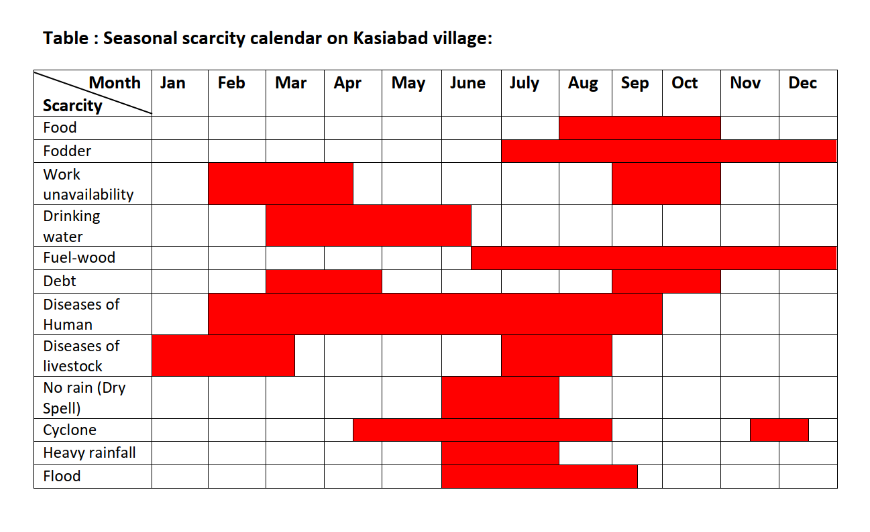
Figure 6: Seasonal scarcity, hazard, and disease incidence in Kakdwip
Insufficient returns from agriculture forces the communities to depend on a variety of other livelihoods, including wage labour, backyard fisheries, animal husbandry, seasonal migration, fishing, and forest and prawn seed collection, some of which are unregulated and unsafe. Fishing, forest collection and catching prawn seeds, for instance, entail a high risk of snake bites and animal attacks.
Identification of vulnerabilities
Life in Kasiabad and Uttar Kasiabad is characterized by mounting biophysical vulnerabilities, including danger to life and agriculture (as indicated in Figure 7), and health and wellbeing, resulting from exposure to natural hazards like cyclones, storms, surge inundation, and animal attacks, as well as social vulnerabilities, including lack of:
- Permanent/pucca houses for protection during cyclones, storms and flooding
- Freshwater for domestic consumption in summer and irrigation in pre- and post-monsoon seasons, making the rain-fed single crop entirely exposed to climatic variability
- Sufficient food production capacity for year-round food security
- Adequate income opportunities owing to small landholding
- Other economic alternatives at the local level, which can strengthen climate adaptation
- Learning opportunities to acquire knowledge and skills for non-farm work
- Access to proper healthcare, including diagnostic and treatment facilities
- Processes to prevent climate-driven loss of indigenous and local knowledge and culture to build resilience and enhance adaptive capacity
- Adequate measures to prevent forest destruction due to deforestation and overgrazing, and to restore forest cover for protection from storm impact and erosion
- Adequate official effort to reverse disaster-induced damage to social infrastructure
- A healthy social environment that is conducive to the growth of well-adjusted youth
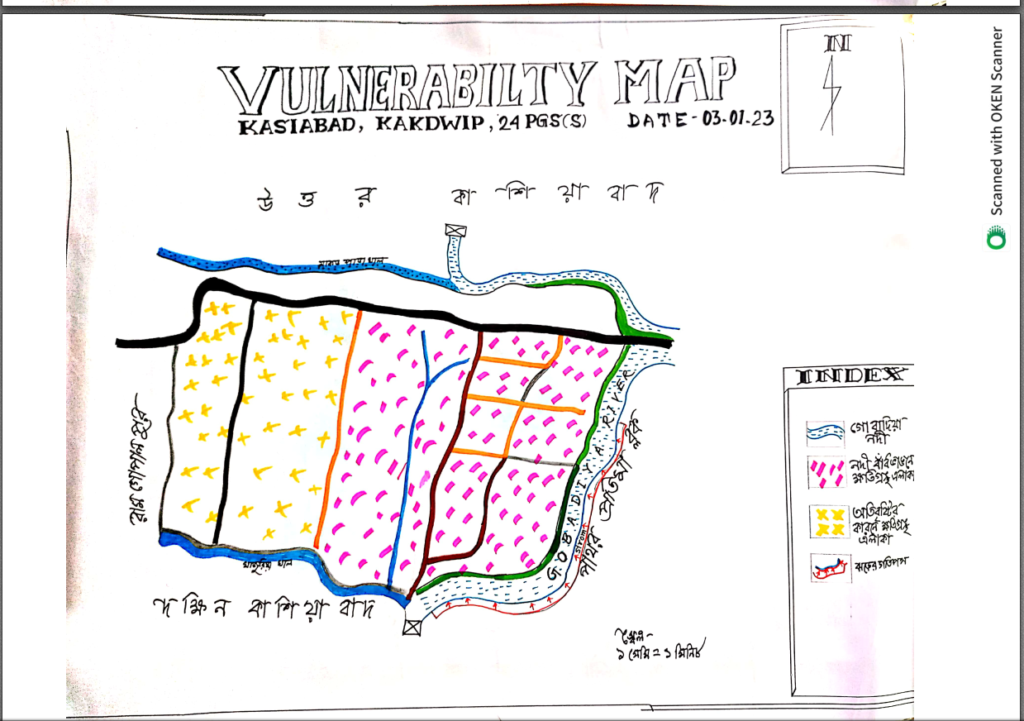
Figure 8: Biophysical vulnerability map, Kasiabad village, Kakdwip
Resilience and adaptive capacity
Mapping the communities’ disaster-preparedness and coping mechanisms revealed that while their resilience is constantly tested by frequent and devastating disasters, the lack of infrastructural support to ameliorate hazard impact and associated vulnerabilities forces them to rely mainly on local and indigenous knowledge systems, dole, assistance and compensation for crop and home loss from governmental and non-governmental sources, and psychosocial support from their relatives, friends, and neighbours. They prepare for disasters by storing edible leaves and fruits, seeking shelter for family and livestock in overcrowded storm shelters, school buildings and fully permanent houses in the proximity, moving foodstuff to high places expected to remain dry, and cutting down trees in the proximity of homes. Adaptive responses, however, appear to be limited to raising the height of homesteads, strengthening, repairing and raising the height of embankments, and migration to urban and peri-urban areas outside the Sundarbans. Post-disaster relief dispensed by governmental and non-governmental agencies appears limited to food, drinking water, tarpaulin etc., and, in some cases, compensation for crop loss and damage to homes, which do little towards reducing communities’ vulnerabilities in the long term. These outputs from PVCA have given our project team the impetus to conduct a needs assessment survey with the Adivasi households within the project area to assess their adaptive capacity at the household level and discover the nature, ways and means in which we may extend capacity support to reduce vulnerabilities in the longer term as well as enhance adaptive capacity to hazard and climate change impacts.
Oak Foundation Leadership Visit

Figure 9: Women’s self-help groups in Kakdwip meeting Oak Foundation leadership team
With these insights about the local communities, our field team in Kakdwip began preparations to host the leadership team of Oak Foundation, the project’s donor, including the Foundation’s President, the Director of the India Programme, and the Programme Officers of the India Programme, for a field visit to Kasiabad.
Bright and early on 24th February 2023, the day of the visit, members of the newly-formed WSHGs in Uttar Kasiabad and Kasiabad joined the visitors and us in the community hall in Kasiabad, where they first discussed the village’s social infrastructure, resources and biophysical vulnerability to hazards before articulating their needs and aspirations. The need for alternate livelihoods and sources of income was emphasized by the women as some expressed an interest in receiving skill development training while others who have already acquired some skills lack the necessary support to start their own small-scale businesses, the right connections for acquiring materials at affordable rates, and the market linkages to sell finished products. This discussion was followed by a short cultural programme of a few well-loved Mundari songs, which the members of the Munda community belted out and danced to.

Figure 10: Local women discussing the biophysical vulnerability of Kasiabad village, Kakdwip, to Oak Foundation leadership team
With training workshops to build the capacities of our women’s and youths’ self-help groups and the needs assessment survey currently underway, Team SOS is excited to share further insights from the field with our readers next month. In the meantime, please share your thoughts and insights with us in the comment section below or write to us at soundofsilenceresearch@gmail.com because every voice matters and none must be silenced!

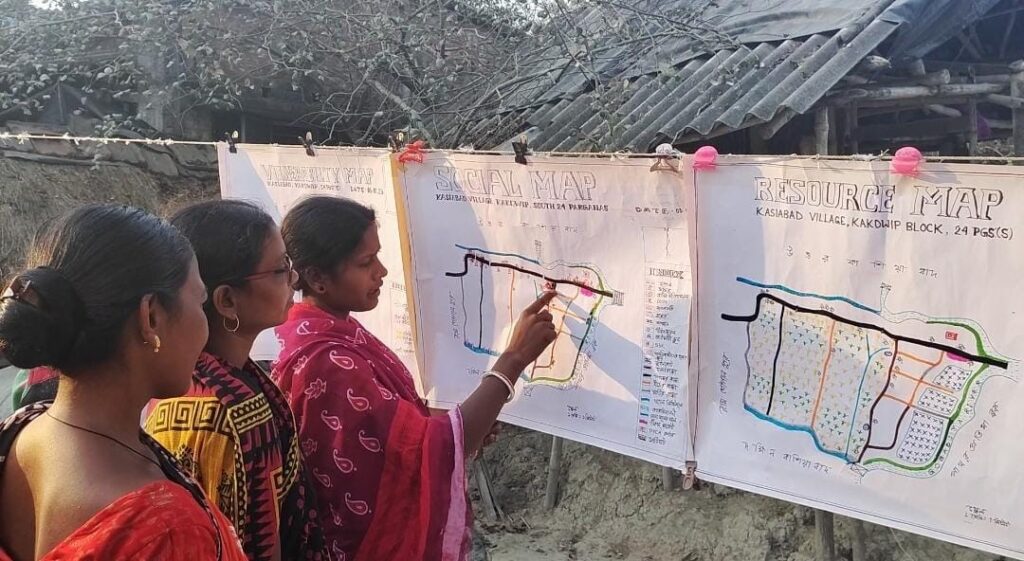

30 thoughts on “<strong>Insights from Participatory Vulnerability and Capacity Assessment in Kakdwip Block, Indian Sundarbans</strong>”
A2 Hosting: A2 Hosting is known for its high-speed performance and excellent customer support. They provide various hosting options, including shared, VPS, and dedicated hosting, along with free site migration.
HostGator: HostGator is known for its affordable plans and reliable performance. They offer unlimited storage and bandwidth, a variety of hosting options, and excellent customer support. http://webward.pw/.
A2 Hosting: A2 Hosting is known for its high-speed performance and excellent customer support. They provide various hosting options, including shared, VPS, and dedicated hosting, along with free site migration.
HostGator: HostGator is known for its affordable plans and reliable performance. They offer unlimited storage and bandwidth, a variety of hosting options, and excellent customer support. http://webward.pw/.
Great site. Lots of helpful information here.
I am sending it to some pals ans additionally sharing in delicious.
And certainly, thank you to your effort!
Hello There. I discovered your blog the use of msn.
That is a really well written article. I will make sure to bookmark
it and come back to read more of your useful information. Thank you for the post.
I’ll definitely return.
I know this web site gives quality depending articles or reviews and other stuff, is there any other website which offers these stuff in quality?
Купить двери на заказ в Москве
Изготовление дверей на заказ по индивидуальным размерам
Как выбрать дверей на заказ
Виды и оттенки дверей на заказ
Двери на заказ: доставка и монтаж дверей на заказ
Бюджетные варианты дверей на заказ
Ламинированные двери на заказ: преимущества и недостатки
Железные двери на заказ: надежность и безопасность
Двери на заказ с фрезеровкой
Заказать двери http://mebel-finest.ru/.
Нужны деньги срочно? Получите займ на карту моментально
взять взаймы на карту https://oformit-mikrozajm-onlajn.ru .
Все о займах онлайн: полный гид по микрозаймам
взять деньги в займ https://www.oformit-mikrozajm-onlajn.ru .
Как поддержать родственника во время лечения наркомании
медикаментозное лечение наркозависимости https://www.vse-o-lechenii-narkomanii.ru/ .
Сантехнические работы всех видов – качество и надежность услуг
засор в унитазе устранение vyzov-santekhnika1.ru/ustranenie-zasora-v-unitaze .
Удобство и экономия времени для клиентов
Ремонт гибридных автомобилей https://www.tokyogarage.ru.
May I just say what a relief to discover a person that really
understands what they’re discussing over the internet.
You certainly realize how to bring a problem to light and make it important.
A lot more people should look at this and understand this side of your story.
I was surprised you’re not more popular given that you surely have the gift.
Very recently , I have visited Kasiabad and Uttar Kasiabad . Team SOS, has been established women leadership in the remotest villages, initiated with organic rice cultivation and excavation of ponds for IFS approach along with holistic agril.search with human touch. They need further training and awareness meeting to get benefits from different line departments both at Govt. and Non-Governmental level.
Very recently , I have visited Kasiabad and Uttar Kasiabad . Team SOS, has been established women leadership in the remotest villages, initiated with organic rice cultivation and excavation of ponds for IFS approach along with holistic agril. search with human touch.
Живописные туры в Териберку: цены и предложения 2024
экскурсии териберка из мурманска https://teriberka-tury.ru/ .
Appreciate the recommendation. Let me try it out.
Ткани по оптовым ценам: анализ рынка и выбор лучшего предложения
ткань купить оптом https://tkanimoskva1.ru .
WoW Boosting Mastery: Tips from Top Boosters
wow boost http://wow-boost1.com .
Преимущества аутсорсинга бухгалтерских услуг для вашего бизнеса
цены на бухгалтерские услуги в москве https://buhgalterskie-uslugi-495.ru .
Купить диплом по лучшим ценам: Экономьте с нами
где лучше купить диплом где лучше купить диплом .
КВалифицированные мастера.
– Ремонт Mitsubishi от лучших специалистов.
Мицубиси сервис в Москве https://mitsubishi-remont-2.ru .
Хорошее вино дешево: как не переплатить и остаться довольным
купить вино цена москва https://xn—-1-fdd2ack2aje8aj4j.xn--p1ai .
Жидкое стекло для автомобиля.
Идеальная защита от загрязнений.
Покрытие авто жидким стеклом цена в Москве https://nanesenie-zhidkogo-stekla-na-avto.ru/ .
star ratin happy customer.
Подробные обзоры и сравнения двигателей Cummins для информированного выбора
купить двигатель cummins купить двигатель cummins .
Сравнение ножей: поможем сделать лучший выбор
опасная бритва http://www.wibe-industrial.ru .
Как избавиться от акне на шее
комедогенная форма акне https://www.aknee.store .
Персональные астрологические консультации по дате рождения: Узнайте о себе больше
вопросы для астрологической консультации http://wp-craft.ru/ .
Пансионат для пожилых людей: Обзор услуг и цен
пансионат для пожилых людей в москве https://www.pansionaty-dlya-pozhilyh-1.ru .
Дома престарелых: Обзор лучших в Москве
дом для пожилых москва http://www.doma-prestarelyh-1.ru .